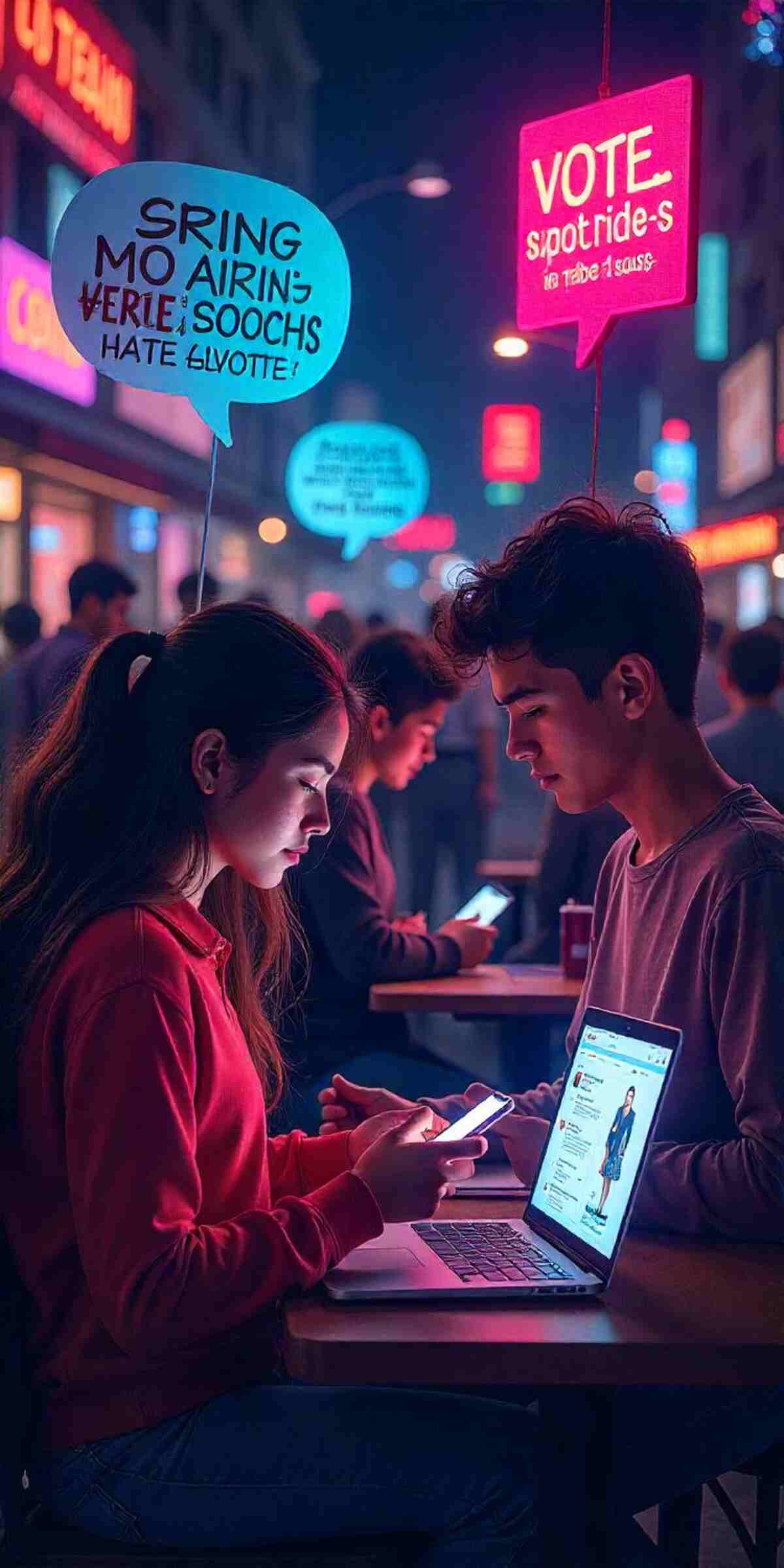
Local political changes shape our digital present because young adults developed their own approach to social media involvement. The traditional media monopsy over political discussions has disappeared because of modern social media platforms. The three platforms TikTok Instagram and YouTube function as main sources for political information distribution among members of Gen Z. The democratic process together with political campaigns face significant transformation because of this ongoing development.
The Digital Migration: From Newsprint to Newsfeeds
People born during the time period 1997 to 2012 have experienced life while surrounded by digital technology from the start. The current preference of this generation demonstrates their clear choice for digital platforms instead of traditional media. A study conducted by The 2025 Sprout Social Index™ revealed that the numerous Gen Z users on social media platform utilize Instagram at 89% and YouTube at 84% and TikTok at 82%. Research indicates political campaigns must eliminate traditional support methods because they fail to connect with this particular demographic anymore. To succeed organizations must develop methods which suit the rapid-paced visual nature of social media platforms.
Cells of shared thought release momentum that differs from friendly groups and community building efforts on social media platforms
Social media enables users to gain extensive information but creates specific obstacles. Platforms that apply algorithms create filtered social spaces where users encounter mostly content which mirrors their convictions and receive limited access to opposing viewpoints. Social media viral effects aid in the expansion of any content including authentic movements alongside fake information. According to EduBirdie research Gen Zers express that social media stands as their leading source for forming social and political opinions since 44% of this generation cites this influence. Statistical data proves that people need digital literacy skills to handle the difficult political information they encounter through online media platforms.
Case Study: The ‘Lad Vote’ Phenomenon
Social media represents a powerful force that has contributed to the emergence of the ‘Lad Vote’ political movement among Australian youth during the recent period. Over the years young Australian voters tended to lean toward progressive politics but recent statistical data shows their male counterparts might be moving toward right-wing politics. YouTube and podcast content has brought conservative figures and themes that explain why Gen Z has shown this newfound political preference. Virtual communication platforms modify political party choices of young voters by breaking down previous predictions about their voting behaviors.
Influencers: The New Political Pundits
Social media influencers now join the lineup of political commentators which was once dominated by traditional experts. Online activist Kat Abughazaleh launched her political career after becoming a progressive TikTok influencer to illustrate how digital influence merges with political activities. Social media platforms provide Gen Z candidates including Abughazaleh with the opportunity to launch political careers during her run for congress in Illinois.
The achievement of passing through digital gaps relies on political campaign strategies
A deep understanding of social media dynamics becomes essential for all political campaigns which want to attract members from Generation Z. The fundamental goal extends beyond site maintenance because candidates need to build actual relationships through real content. The political campaign of Vice President Kamala Harris serves as an excellent demonstrative case. Social media users from Gen Z forced attention with their trending content selections enabling her team to produce viral political moments which struck a chord with young people. Modern political campaigns require adaptability and cultural awareness since such strategies hold great value.
Conclusion: Navigating the Digital Democracy
The strong voting presence of Gen Z will inevitably transform political future directions because of their social media participation. These platforms promote expanded participation rates yet present diverse challenges that citizens have to handle carefully. Both governmental institutions and citizens need to create conditions for digital involvement to develop into substantive meaningful political action. We must answer the fundamental question regarding our current digital democracy since one single tweet through social media can activate public movements while we aim to preserve its strength alongside inclusiveness of various voices.
